
What is the first question that you should ask yourself when you need to train a team? The answer should be, "What do I have to work with?" And the answer to this question should be, first and foremost, facility or what is in that facility.
I know that many would say bioenergetic demands of the sport or training age, but if you don't have a facility or you don't know what's in that facility, none of the other stuff matters. Once you answer the facility question, you can move on to the other problems.
Why would I start with this question? I always have a young, eager staff of coaches working with me and most have done an amazing job. After they leave at the end of the day, they text and say, "I can hear you saying things in my head all day." This means that they heard my lessons when I was speaking but didn't really hear them until they were out there on their own. I think this is similar to a child with his parent. You always have to learn the lesson for yourself.
RECENT: The Absurd Effectiveness of Simplicity
The young coaches that I have always have really well-thought-out, confusing programs that make great sense to them but to no one else. Then they realize that the programs don't work within our facility and budget. (If one more assistant asks me if we can buy matching medicine balls, I'll throw the medicine balls at him). I have seen programs requiring 20 four-pound medicine balls. Well, guess what? That isn't in the budget, so I guess the athletes will have to throw 10-pound medicine balls. This is important to understand for what you are about to read next.
I have attached my entire fall football training program. I wasn't sure if I wanted to do this because I have no doubt that many people will find holes in it. Cam Davidson will read this and text me the 28 mistakes I've made. And you know what? Cam is probably right. But what Cam gets is that until you walk a mile in my weight room, you won't know the challenges. So here is what we did this season.
First, here are some important notes about the program:
- We lift the entire team on Mondays and Wednesdays. This is what is shown.
- If you play fewer than 15 plays, you lift on Thursday.
- If you don't play, you also lift on Friday.
- We have four lifting groups: 30 men at 6:00 am, 15 men at 9:00 am, six men at 11:00 am, and 30 men at noon.
- We have nowhere to warm up, so each day we do a circuit warm up. For example, we might do 4 X 5 front squats with four sets of hurdle over/under and 4 X 20 band pull-aparts.
- We must have everyone in and out in under 44 minutes due to class schedules.
- All accessories are supersetted due to lack of equipment.
- If you see the word "back," this means pick a row or pull. We only have one elevated row and three lat pull/row combinations, so the men have some freedom to pick on these days.
- We do not do position-specific lifting.
- Sometimes the room is shared with another team.
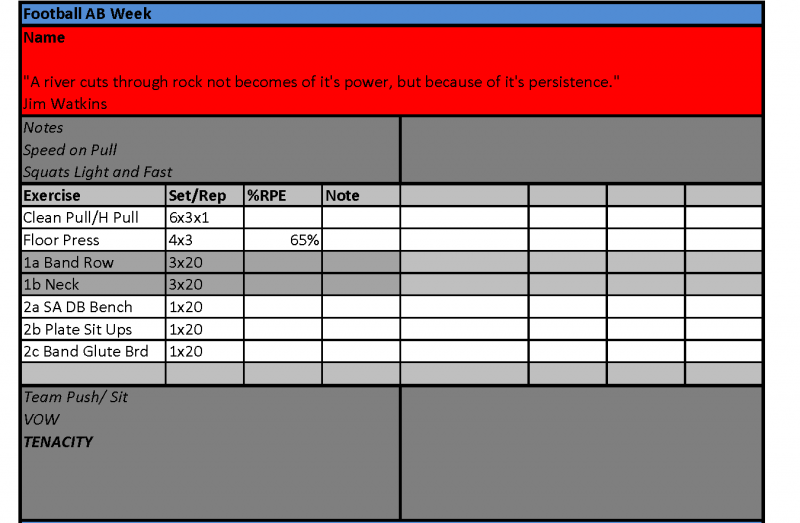
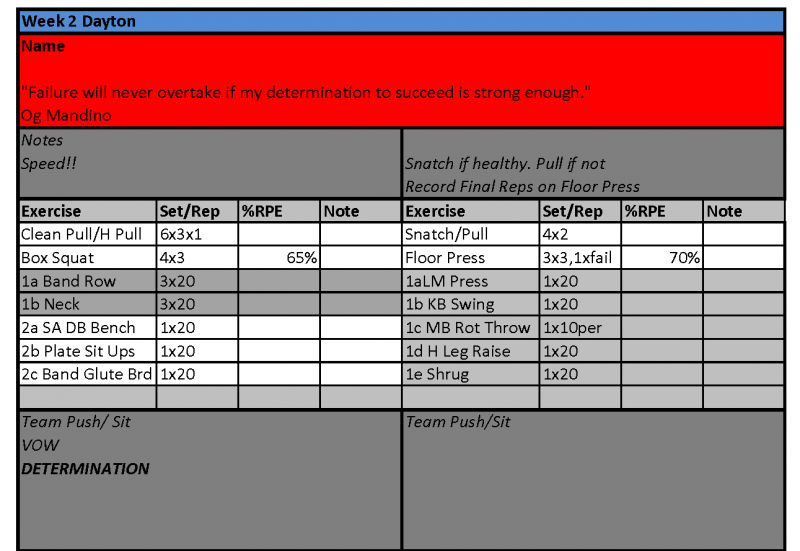
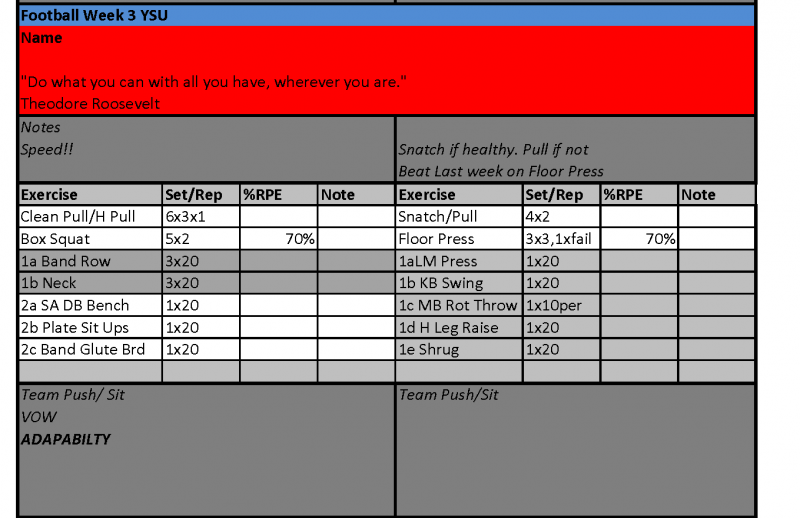
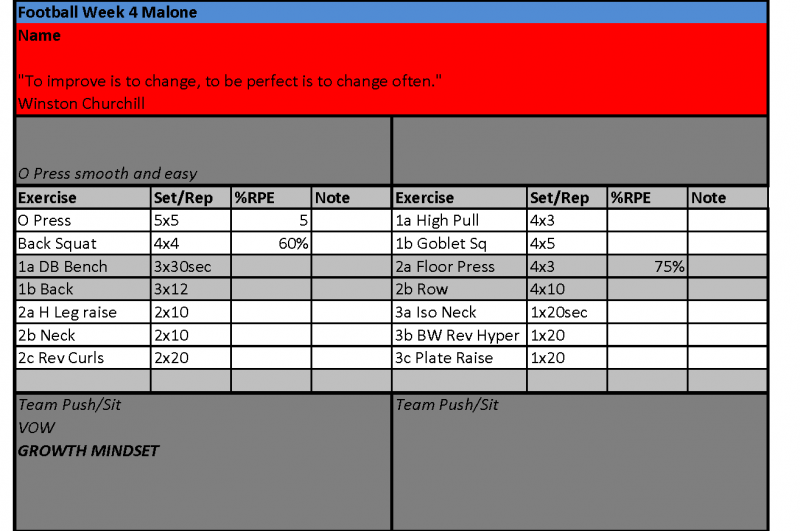
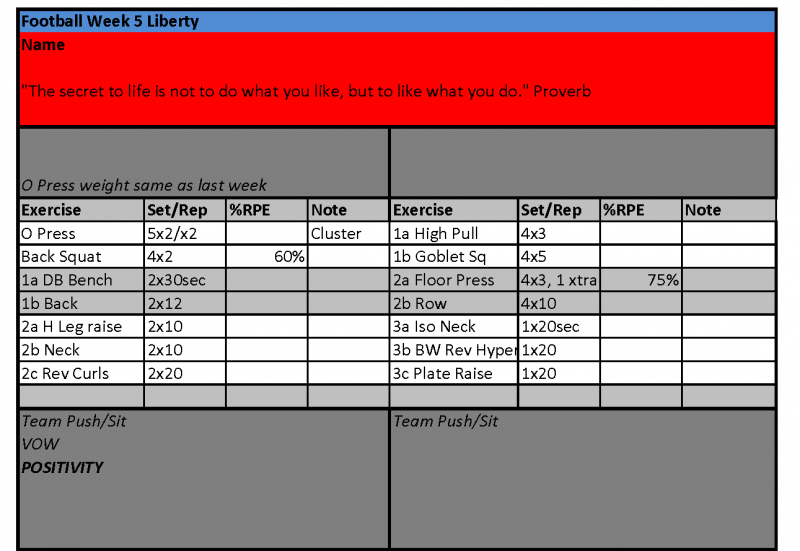
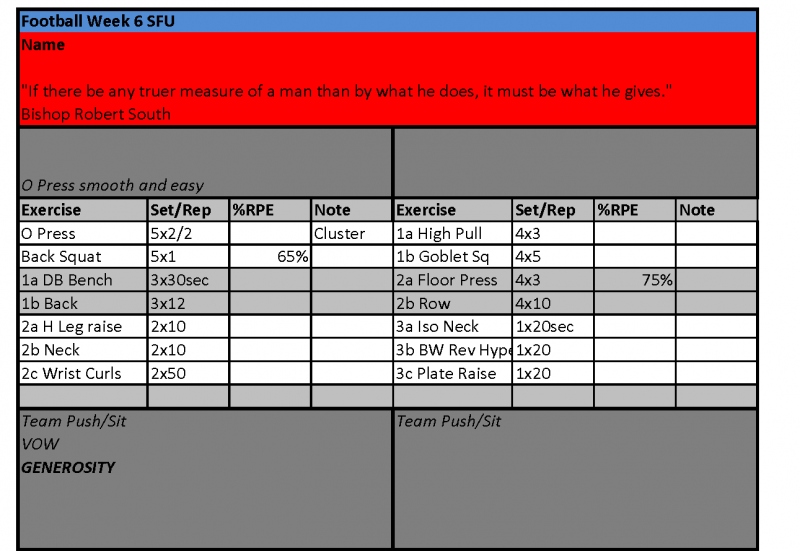
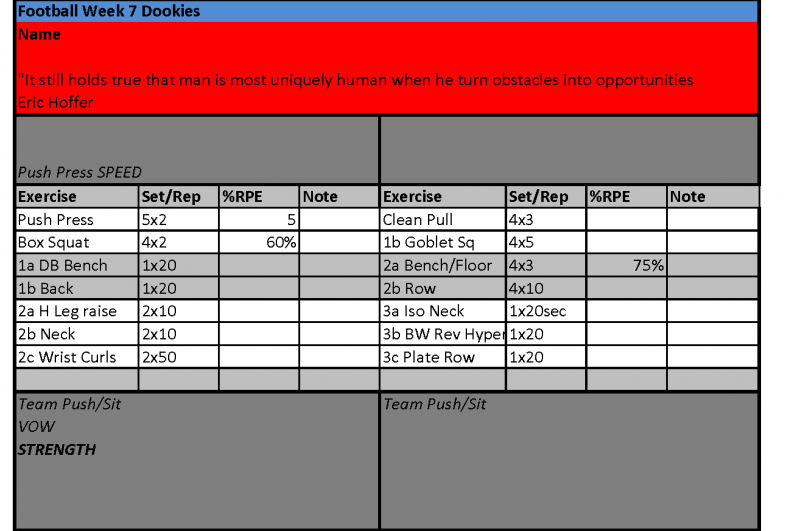
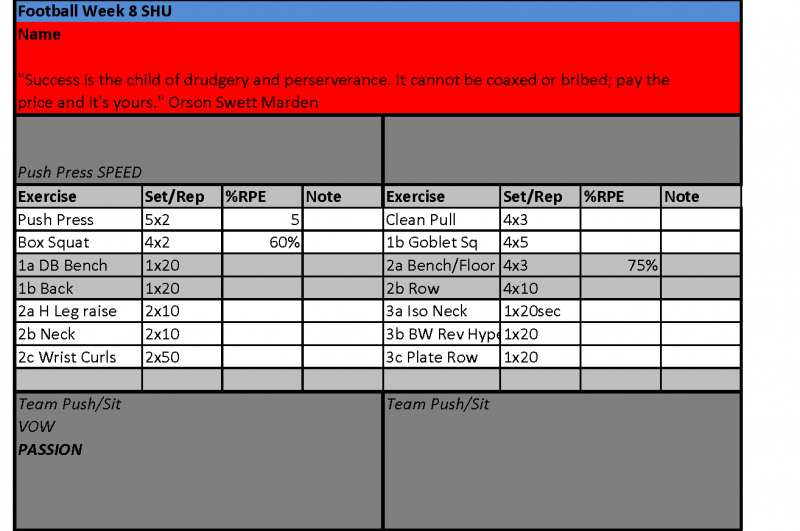
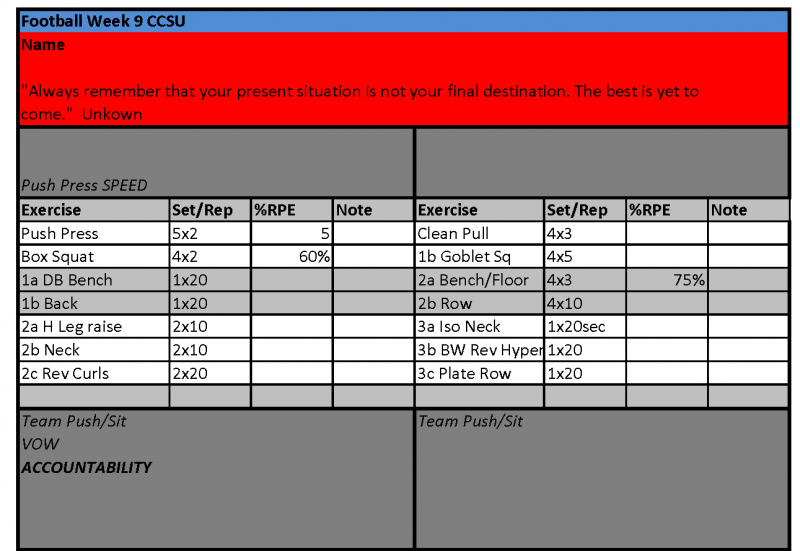
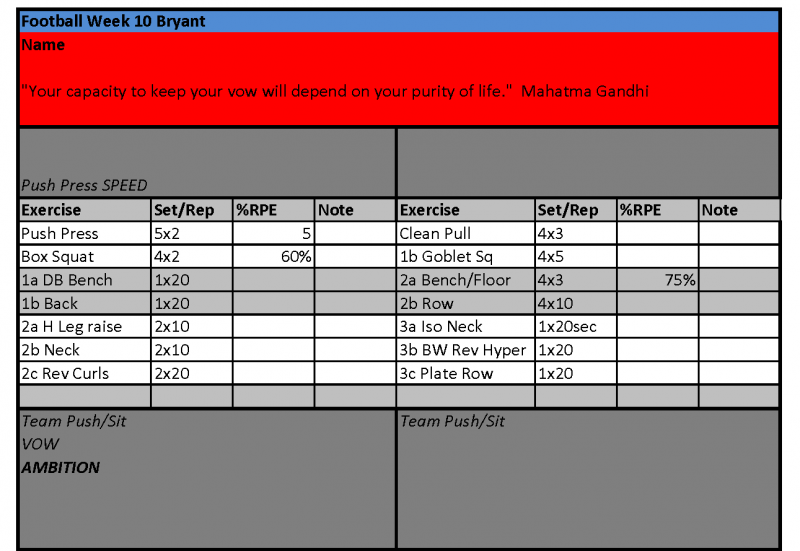
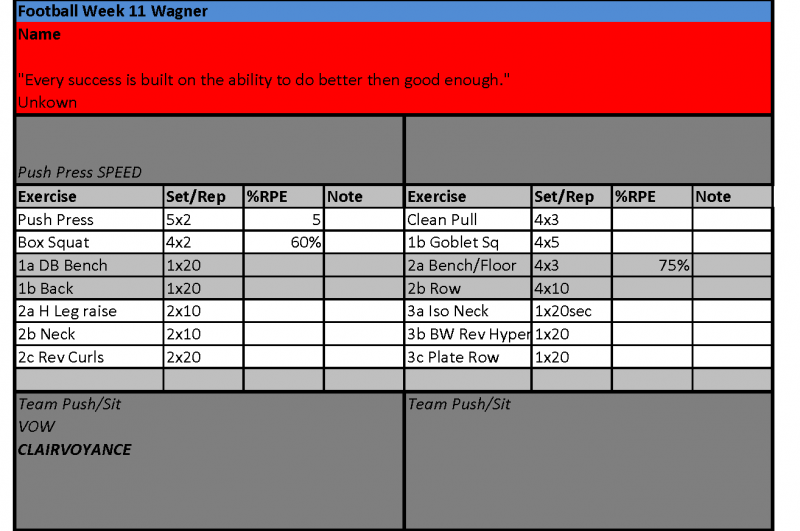
As you can see, the program is set up very simply. We don't overcomplicate anything here. I would love to spend more time on prehabilitation or the warm up, but we are limited with regards to time. So we try to keep the warm up short yet effective. I hope this program gives you some new ideas. Please feel free to critique it with well-thought-out opinions. Just remember, no program is perfect. If it was, wouldn't we all be using it?











Thanks for sharing. I love the quotes. I've been using them on my programs as well.